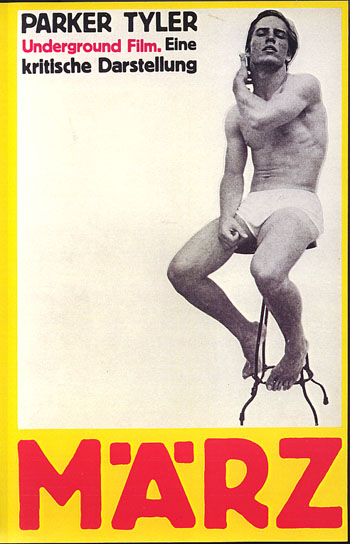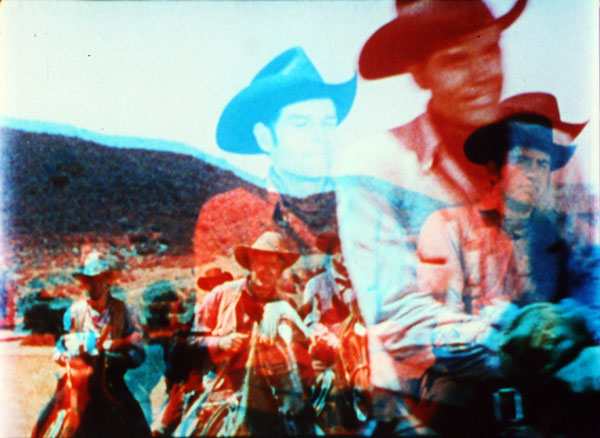
Along the way towards completing a book on Hollywood in the 1940s, David Bordwell has taken a slight detour to examine the cultural milieu, writing style, essential arguments and long-term impact of four major film critics of the period, Otis Ferguson, James Agee, Manny Farber and Parker Tyler. And now he wraps up what would indeed make for a fantastic e-book: “First, I summarize the arguments I’ve made in the preceding entries. Then I trace the afterlife of Agee’s work and the subsequent writing of Farber and Tyler. Finally, I offer a few general reflections on their legacy.”
MORE READING
1977 “is the real turning point in Cahiers‘ history where they shifted positions from a dogmatic Maoist one to a return to a more classic cinephilia that includes writing about more commercial American films,” writes David Davidson, who posts a translation of Serge Le Péron’s review of Star Wars, noting that it “illustrates this mixture of renewed attention, fascination and ambivalence.” He’s followed up, too, with Pascal Bonitzer‘s 1980 list of the best films of the 1970s, which includes Star Wars, and Mitch Tuchman and Anne Thompson‘s interview with George Lucas for the July-August 1981 issue of Film Comment, which ran, translated, in Cahiers du cinéma two months later.
Michael Mann’s Thief (1981) from Omar Ahmed.
“Thief is a virtual template for Mann thematics he would regularly explore in the crime film genre,” writes Omar Ahmed. “Yet in the midst of a narrative that could only be described as an urban western, Frank’s refusal to conform and to be assimilated into a much wider capitalist system of working class exploitation requires further elucidation as an early marker of Mann’s politics.”
The Film Doctor’s posted Morgan Honaker‘s analysis of a sequence in Wes Anderson‘s Moonrise Kingdom (2012).
In Inventing Peace, “an intellectual collaboration in the form of a sprawling dialogue,” Wim Wenders and Mary Zournazi “not only ruminate on their own ideas but draw on the artists, filmmakers and philosophers who inspired them to explore a new visual and moral language for peace,” writes Paola Totaro for the Saturday Paper.
Speaking of which, in the Notebook, David Phelps argues that “the commercial for Axe Peace exploits a sweet nostalgia for a time when mainstream culture could equate personal and political relationships by, it seems, advocating peace through sex.”
Julian Ross reports on the recent ninth edition of the the Orphan Film Symposium in Amsterdam. Among the highlights: “A Technicolor dye transfer printing error was used as a site of uncanny resurrections of ghosts that haunt a B-movie Western in Technicolor NG (2014) presented by Walter Forsberg & John Kalcsmann as a 16mm live projection performance (see details here).”
IN OTHER NEWS
The fifth issue of La Furia Umana on paper is now available.
“Immediately following the world première of his latest project, In Your Eyes, at the Tribeca Film Festival in New York, [Joss Whedon] popped up on the screen via a video, taped on the Avengers: Age of Ultron set, to inform the audience that the movie they’d just seen was simultaneously being released worldwide.” As the Dissolve‘s Tasha Robinson reports, the film about “a young man and woman who grow up on opposite sides of the country, occasionally experiencing overwhelming, sometimes physically painful visions of each others’ lives” can now viewed anywhere for $5. The Playlist‘s Drew Taylor gives the film a B+, calling it “a new supernatural romance that, if you can get past the occasional sappiness, is a pretty moving, offbeat little love story.”
Doug Cummings talks with Bernardo Rondeau about the Academy @ LACMA series he’s recently been hired to program.
IN THE WORKS
“Tom Hanks and Steven Spielberg are partnering again as Hanks has become attached to an untitled thriller set during the Cold War that Spielberg is eyeing to direct for DreamWorks.” Justin Kroll reports for Variety.
BLU-RAY/DVD
“When Lars von Trier drafted his fellow Danish filmmaker Jørgen Leth into the grand cinematic experiment that became The Five Obstructions, von Trier saw it—or at least framed it—as a bit of spiritual and aesthetic rehabilitation for an old friend who’d gotten soft.” And, as Noel Murray writes at the Dissolve, the “resulting 2003 documentary about the project ended up doing as much for von Trier’s reputation as Leth’s. After years of riling up the international film community with his boasts, pronouncements, and provocations, von Trier in The Five Obstructions appeared much more playful and approachable: an impish artist just trying to improve himself and others.” Earlier: James Quandt and Sverre Raffnsøe.
“For Ever Mozart could be seen as a war film with no heroes and a surplus of fools,” writes Chris Cabin, “but clearly Godard is more concerned with notions of depiction and ‘realism’ in filmmaking.”
Also at Slant, Jake Cole on Master of the House (1925): “In Carl Theodor Dreyer‘s classic work, a visual style attuned to expressive but uncluttered composition begets a spiritual presence, an incorporeal manifestation of the social evils depicted in the frame.”
For news and tips throughout the day every day, follow @KeyframeDaily on Twitter and/or the RSS feed. Get Keyframe Daily in your inbox by signing in at fandor.com/daily.




